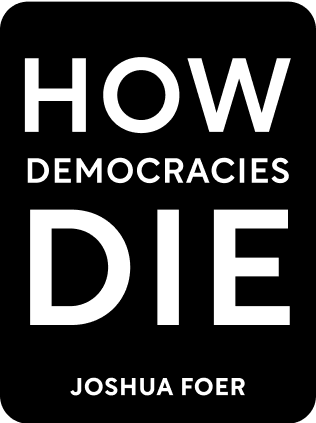

This article is an excerpt from the Shortform book guide to "How Democracies Die" by Steven Levitsky and Daniel Ziblatt. Shortform has the world's best summaries and analyses of books you should be reading.
Like this article? Sign up for a free trial here .
What are the dangers of political polarization? What might some solutions be to mitigate political polarization in America?
According to Levitsky and Ziblatt, the authors of How Democracies Die, party polarization tends to lead to the erosion of democratic norms and the destruction of democracy. They define polarization as the disappearance of the middle ground in politics, in which parties do not differ merely on basic ideology or matters of public policy—but, instead, are sorted into mutually incompatible worldviews.
In this article, we’ll discuss Levitsky and Ziblatt’s solution to the extreme partisan divide.
The Dangers of Polarization
Levitsky and Ziblatt argue that extreme political polarization is often the decisive factor in triggering the abandonment of democratic norms of mutual toleration and institutional forbearance. If a party comes to believe that its opponents simply cannot be trusted to hold power, it becomes easier to rationalize any means to prevent those opponents from attaining power.
| The Growing Partisanship of American Politics Other scholars have explored this theme of polarization and the threat it poses to stable democratic governance. In Why We’re Polarized (2020), political journalist Ezra Klein observes that American voters have become more and more reliably partisan. In the 1970s, the typical voter was far more likely to split their ticket between Republicans and Democrats by voting for one party at the presidential level and for the other party at the congressional and state levels. Back then, there was only a slight 0.54 correlation between someone’s vote for president and their vote for House or Senate. But today, there is a near-perfect 0.97 correlation. Klein argues that this is due to the growing ideological homogeneity of the two major parties and the consolidation within them of two monolithic and mutually exclusive worldviews—across which it’s become impossible to seek common ground. Furthermore, partisanship has become a closely held form of identity for many American voters because it is now bundled together with so many other forms of identity such as race, gender, and religion. In How Democracies Die, Levitsky and Ziblatt delve further into the problem of political polarization in America and offer some tentative suggestions for how to address it. Despite the attempt, however, they don’t fully address just how difficult it is to get people to question their core political beliefs and identities. In fact, political scientist Norm Ornstein points to studies showing that when you expose partisans to the views of the other side, they become more entrenched and unflinching in their own political identities. |
Transcending the Partisan Divide
Levitsky and Ziblatt argue that pro-democratic forces must overcome America’s deep structural divisions if they are to preserve democracy.
They advocate the forging of broad, pro-democratic coalitions that cut across racial, ethnic, religious, and socioeconomic lines. In their analysis, it is not enough to simply build interest groups of like-minded activists. A broad coalition would entail liberals reaching out to conservative businesspeople, evangelicals, gun owners, and other traditional opponents. These groups all have sharp disagreements with one another on a range of issues, but would all potentially stand to lose if authoritarianism and lawlessness gained a stranglehold over the country.
The authors contend that such broad coalitions can be enormously beneficial. By their very nature and composition, they can appeal to a broader slice of the country and transcend the partisan divide. This partial defusing of partisan tensions, they argue, can lead to depolarization, which in turn, strengthens democratic norms of mutual toleration and institutional forbearance.
| Working Toward Depolarization Some research suggests that the depolarization envisioned by Levitsky and Ziblatt is indeed possible. Stanford scholars James Fishkin and Larry Diamond have seen some positive results with a technique called Deliberative Democracy. Through Deliberative Democracy, people from different backgrounds come together as “citizen delegates” to participate in a discussion about contentious political issues, consider the merits of opposing arguments, and try to consciously set aside their partisan labels. In 2020, Fishkin and Diamond conducted an experiment called “America in One Room,” in which they brought together a representative sample of 500 Americans to discuss a range of hot-button issues from healthcare reform to global warming to immigration. Through moderated, small-group discussions, the researchers found that participants developed increased empathy for their opponents and gained a better understanding of how policy proposals would affect them. The exercise seemed to deliver real results. At the beginning of the experiment, researchers found sharp divisions between partisans on all 26 issues under discussion. But after building mutual empathy and understanding, they were able to find significant common ground on 19 of the 26 issues. Currently, Fishkin and Diamond are working on a digital engagement tool that would enable them to implement Deliberative Democracy on a nationwide scale. |

———End of Preview———
Like what you just read? Read the rest of the world's best book summary and analysis of Steven Levitsky and Daniel Ziblatt's "How Democracies Die" at Shortform .
Here's what you'll find in our full How Democracies Die summary :
- How shared norms are essential for preserving democracy
- Why the Trump presidency threatened those shared norms
- Why democracy goes beyond individual leaders and parties and must be a shared enterprise among committed individuals






